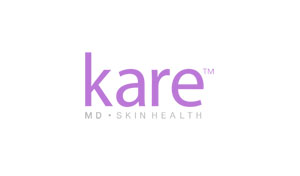
A surgical rhinoplasty is a cosmetic procedure performed by plastic surgeons to recontour the nose so that it has a more harmonious and proportional shape. As an alternative, some patients have opted to undergo a non-surgical nose job with permanent fillers such as Bellafill and Silicone.
Patients who have undergone a nonsurgical nose-shaping procedure with permanent fillers may develop long term complications. If you have been treated with PMMA fillers to your nose, you may be asking yourself what options there are available to remove this unwanted filler.
Dr. Raffy Karamanoukian is a double board-certified plastic surgeon who has pioneered advancements in the surgical and non-surgical management of Bellafill complications in the nose and face. He has lectured hundreds of plastic surgeons and trained many others regarding his protocols for the removal of silicone and PMMA polymers from the soft tissue of the face and body.
In our Los Angeles plastic surgery office, we manage complications from Bellafil and PMMA on a daily basis. We are the world leaders in the removal of Bellafill nodules and soft tissue fillers from the nose, cheeks, chin, and face.
Nonsurgical rhinoplasty with Bellafill may exact complications that are predictable and long lasting. Patients often develop long-term edema, chronic soft tissue reaction, swelling, inflammation, erythema and redness, and unwanted nodularity, that may make the results unappealing and unattractive.
Dr. Karamanoukian uses a surgical method to remove as much of the Bellafill as possible after a poorly performed rhinoplasty with Bellafill fillers. His approach begins with a careful medical examination to determine the severity of the soft tissue inflammation and disease. Some of the nodularity and soft tissue swelling may be cyclical in nature and these complications should be treated in the early phase of development so as to reduce long-term problems.
It may come as a surprise that patient still undergo Bellafill even though there is a finite risk profile for the development of nodularity and permanent soft tissue complications. Dr. Karamanoukian advises patients against the use of Bellafill and other PMMA substances as we have found that a small subset of patients may develop complications that may be longlasting.
Since PMMA is not a substance that is readily absorbed by the body, patients who develop complications such as soft tissue reaction may develop chronic issues that may cause fibrosis and tissue edema. Reversal of Bellafill complications is a difficult and complex problem that requires meticulous attention to detail and experience.
Dr. Karamanoukian developed surgical protocols for reducing granuloma formation and nodularity from Bellafill fillers. He has developed these techniques after years of experience managing patients who have had fillers by other doctors and have untoward results from the filler. Non-surgical rhinoplasty has revolutionized how we approach revision nosejobs and the use of permanent fillers seems appealing at first, but may pose long-term issues.
The surgical management of Bellafill fillers in the nose begins with a careful examination, followed by biometric analysis of the existing structural support of the nose. Dr. Karamanoukian has treated many patients with Bellafill nodularity in the nose and uses sound plastic surgery techniques to carefully extract the filler from the normal soft tissue.
Non-surgical management of Bellafill and PMMA complications in the nose also requires a medical examination and evaluation of the soft tissue, bone, and cartilage in the immediate vicinity of the filler. After a careful assessment, Dr. Karamanoukian uses intralesional injections to reduce the fibrosis and scarring inherent in a granuloma. By diminishing the inflammatory reaction and dissolving unwanted scar tissue, Dr. Karamanoukian can improve results despite the fact that the Bellafill and PMMA are still present in the soft tissue. This non-surgical approach does not treat the underlying issue and plans in the future should be made to extricate the unwanted filler at some point.
As a pioneer researcher and clinician, Dr. Karamanoukian has developed extensive protocols for the management of Bellafill complications. His approach uses long-standing plastic surgery principles to undermine and remove unwanted filler from the surrounding normal soft tissue. Although this is a complex procedure, performed by few surgeons in the world, Dr. Karamanoukian has repeatedly obtained outstanding results with high levels of reproducibility and predictability in outcome.
To schedule a consultation for Bellafill removal from the nose or eyelids, please call our Los Angeles plastic surgery practice at (3. Our patient care coordinators can help answer basic questions about Bellafield removal, but we advise patients that they will need , a consultation for individualized assessments and recommendations. Bellafield and PMMA complications are life-changing, and our approach can improve your quality of life and give you some relief from this bad decision.